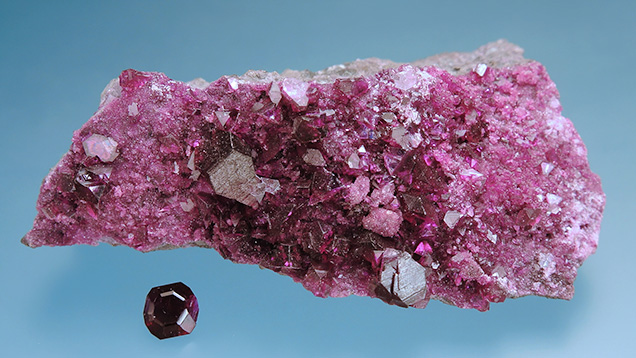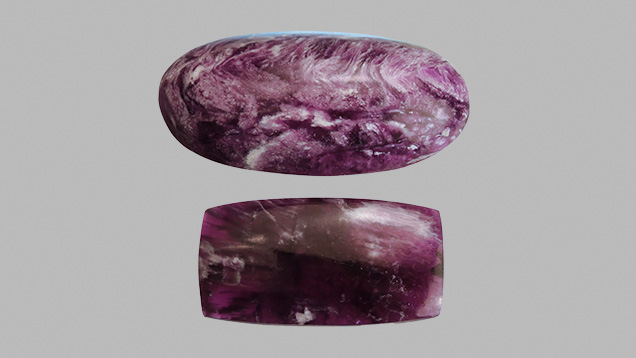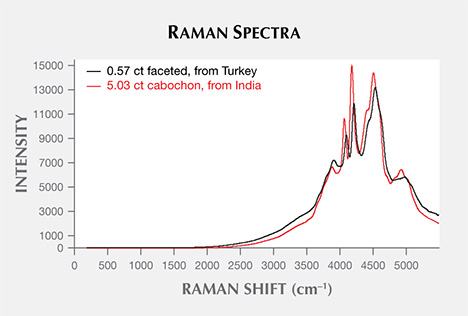Kämmererite Cabochons from India

Kämmererite is a purple variety of clinochlore, a mica-like Mg-Al-silicate with the formula (Mg,Fe)5Al[(OH)8|AlSi3O10]. Its color is caused by chromium. Kämmererite is always found in fractures of ultrabasic rocks, usually with chromite ore. The only known locality for transparent crystals is the Kop Krom chromite mine in the Kop Daglari Mountains of Turkey. Transparent crystals from this area (figure 1) can measure up to 2 cm. Some of this material has been faceted as rare collector gemstones (H. Bank and H. Rodewald, “Schleifwürdiger, roter, durchsichtiger Chlorit: Kämmererit,” Zeitschrift der Deutschen Gemmologischen Gesellschaft, Vol. 28, No. 1, 1979, 39–40, in German).
An unknown location in India recently yielded massive kämmererite that was used to carve interesting cabochons (figure 2); 10 such samples were examined in this study. The cabochons have an attractive light to dark purple color; some thinner pieces are translucent. Some of the material shows a folded texture, and this type is visually similar to charoite, a well-known ornamental stone from Siberia. The measured refractive index (RI) of the new kämmererite is approximately 1.57, very close to charoite, but clinochlore has a much lower Mohs hardness (about 2.5, rather than charoite’s 5–6). This new kämmererite is inert under UV light, but white layers in the samples show creamy fluorescence under both long-wave and short-wave UV. Raman spectroscopy revealed a characteristic group of peaks at 3877, 4063, 4175, 4500, and 4920 cm–1 in the spectrum (figure 3), confirming the material’s identity. Visible spectra further supported this conclusion. The amount of new massive kämmererite rough is unknown, and the material may remain rare.





